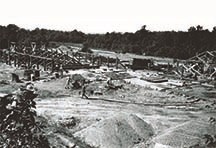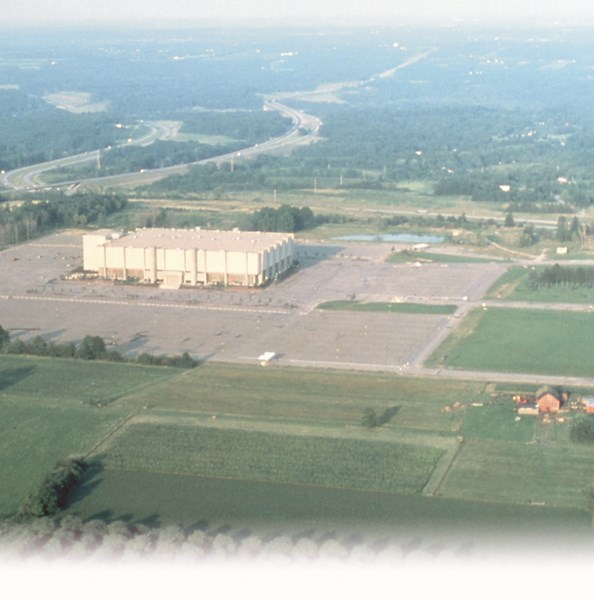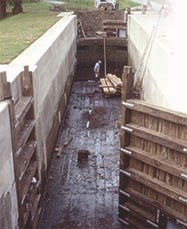|
The story of Cuyahoga Valley National Park's establishment highlights the impact local citizens and political leaders can have when they work together with passion and common purpose to protect aspects of America's heritage. This story is rooted in the environmental and social movements of the 1900s. It is about the desire to have scenic open spaces near to home, especially for recreation. It is about not only saving significant features but restoring a landscape to be culturally vibrant, less polluted, a better home for wildlife, and a model for sustainable living. 
NPS Collection A Retreat From Urban LifeThe valley's role in providing recreation for urban dwellers has its roots in the 1870s, when people came from nearby cities for carriage rides or leisure boat trips along the canal. In 1880, the Valley Railway became another way to escape the pressures of urban industrial life, and leisure excursions were supplemented by the Guide Book for the Tourist and Traveler over the Valley Railway! 
NPS Collection In 1929 the estate of Cleveland businessman Hayward Kendall donated 430 acres around the Richie Ledges and a trust fund to the state of Ohio. Kendall’s will stipulated that the “property shall be perpetually used for park purposes.” It became Virginia Kendall Park, in honor of his mother. In the 1930s, the Civilian Conservation Corps built much of the park’s infrastructure including what are now Happy Days Lodge and the shelters at Octagon, Ledges, and Kendall Lake. 
NPS Collection Park Idea Meets NPS ResistanceAlthough regional parks safeguarded certain places, by the 1960s local citizens feared that urban sprawl would overwhelm the Cuyahoga Valley’s quiet beauty. Early efforts to slow development focused on fighting individual projects and rarely met with success. 
NPS Collection Local Citizens RallyOne of the first private organizations to call for a Cuyahoga Valley park was the Lake Erie Watershed Conservation Foundation. Executive Director George Watkins felt that if valley land development continued unchecked, soil erosion and flooding would worsen and wash more pollution down the Cuyahoga River into Lake Erie. 
Photo by Tom Jones Building the PartsThe law that established the national park did so in name only. The hard work of building it remained ahead. Over the next 34 years, Congressman Regula championed the park in the House of Representatives. He helped guide over $200 million to the park to purchase land, restore nearly 100 historic structures, and establish activities for the public’s enjoyment. Realizing the VisionAt the 1974 hearings, Congressman Regula said, “…we could be the architects in preserving this heritage for future generations, it goes far beyond today in terms of the potential.” This has proved true. In 1996 Regula sponsored legislation to create the Ohio & Erie Canalway, a 110-mile national heritage area from Cleveland to New Philadelphia that extends the Towpath Trail and Cuyahoga Valley Scenic Railroad. The Canalway physically connects the national park to local parks and 40 communities. Regula passed away in July 2017. |
Last updated: July 25, 2024
